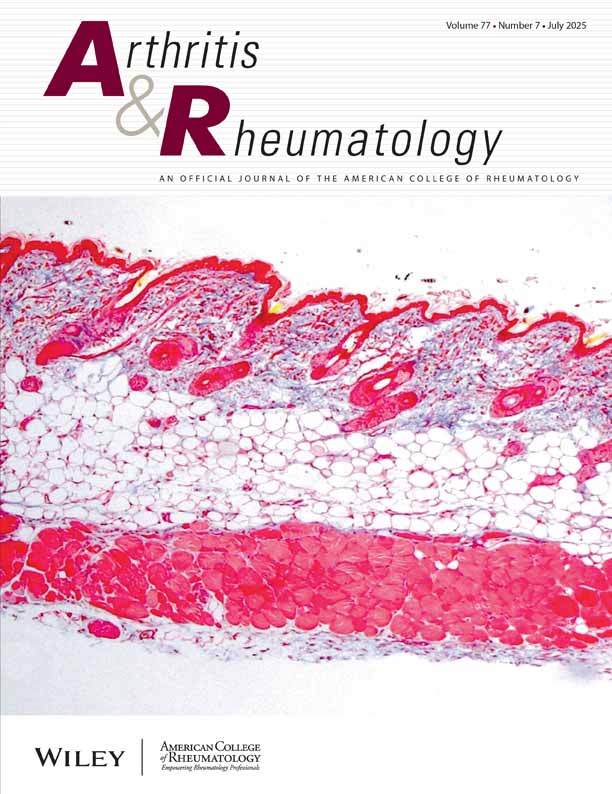Regulation of JNK by MKK-7 in fibroblast-like synoviocytes
Abstract
Objective
JNK regulates matrix metalloproteinase (MMP) gene expression and joint destruction in rheumatoid arthritis (RA). Previous studies demonstrated that the 2 upstream MAPK kinases (MKK-4 and MKK-7) are phosphorylated in RA synovium and form a complex with JNK in fibroblast-like synoviocytes (FLS). However, the functional hierarchy of MKK-4 and MKK-7 in FLS has not been determined. We determined the relative contributions of these MKKs by evaluating the effect of MKK-4 and MKK-7 gene knockdown in cultured FLS.
Methods
FLS were transfected with MKK-4 and/or MKK-7 small interfering RNA, and protein levels were determined by immunoblotting. After stimulation with interleukin-1β (IL-1β), tumor necrosis factor α (TNFα), or anisomycin, kinase function was determined by in vitro kinase assay. Activator protein 1 (AP-1) binding and transcriptional activity were determined by electrophoretic mobility shift assay and AP-1–luciferase promoter assay, respectively. MMP-3 expression was determined by enzyme-linked immunosorbent assay and quantitative polymerase chain reaction.
Results
IL-1β–induced JNK phosphorylation was dependent on MKK-7 but not on MKK-4; however, anisomycin-activated JNK required both kinases. In vitro kinase assay demonstrated that IL-1β– or TNFα-induced JNK activity was only MKK-7 dependent, while anisomycin-activated JNK was both MKK-4 and MKK-7 dependent. IL-1β–induced AP-1 binding activity and AP-1–driven gene expression were strictly MKK-7 dependent. Finally, MMP-3 production only required MKK-7, and there was no effect of MKK-4 deficiency.
Conclusion
These data indicate that only MKK-7 is required for JNK activation in FLS after cytokine stimulation; however, other forms of cellular stress utilize MKK-4. Thus, JNK function might be modulated by targeting MKK-7 to suppress cytokine-mediated FLS activation while leaving other stress responses intact.




